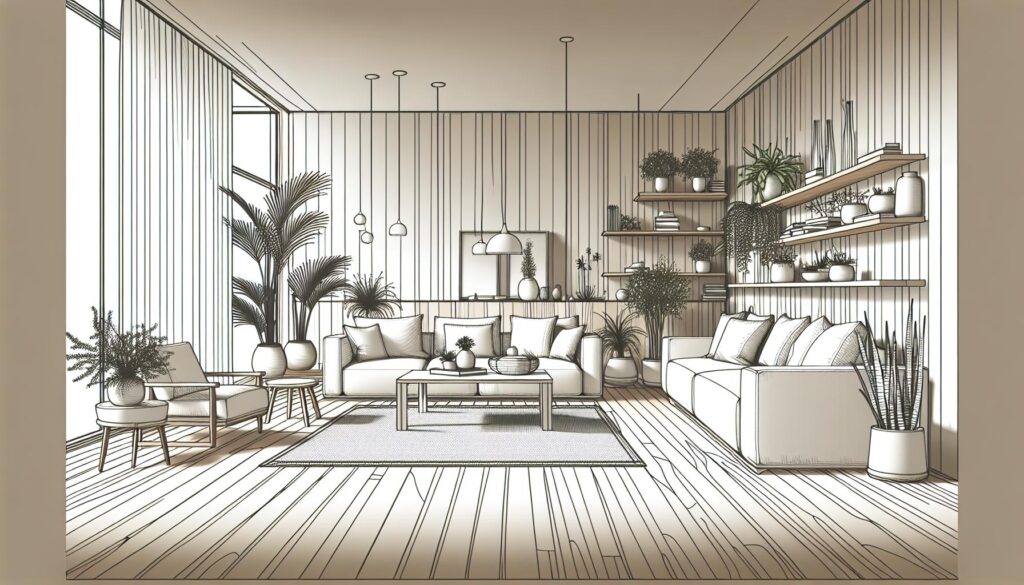Are you feeling overwhelmed by clutter and excess stuff in your life? I’ve been there, and I know how liberating it can be to embrace minimalism. In this beginner’s guide, I’ll share practical tips on simplifying your life and living with less.
Minimalism isn’t just about decluttering your physical space; it’s a mindset shift towards intentional living. I’ll show you how to prioritize what truly matters and let go of the rest. Get ready to create a more peaceful and purposeful environment for yourself.
Join me on this journey to discover the joys of minimalism and how it can transform your life. Let’s start this exciting adventure together and unlock the benefits of living with less.
Understanding Minimalism
When embracing minimalism, it’s crucial to grasp the concept beyond just removing physical clutter. Minimalism is about intentionality and prioritizing what adds value to your life. It involves letting go of excess material possessions that do not serve a purpose or bring joy.
Minimalism encourages mindfulness in consumption and a shift towards simplicity. By focusing on what truly matters, one can create a space that fosters calmness and clarity. Reducing distractions allows you to direct your energy towards pursuits that align with your values and goals.
In essence, living with less through minimalism is a pathway to freedom from the constant need for more. It is about quality over quantity and conscious decision-making in all aspects of life. By simplifying, you make room for what truly enriches your life and let go of the rest.
Benefits of Living with Less
Living with less comes with numerous advantages that can positively impact various aspects of your life. Here are some key benefits to consider:
- Reduced Stress: Removing clutter and excess possessions can lower stress levels by creating a calm and organized environment.
- Increased Focus: With fewer distractions in your surroundings, you can focus better on tasks at hand and enhance productivity.
- Financial Freedom: By prioritizing essential items over unnecessary purchases, you can save money for things that truly matter to you.
- Better Health: A minimalist lifestyle promotes mental clarity, reduces decision fatigue, and encourages healthier habits.
- Sustainable Living: Embracing minimalism often results in reduced waste and a more environmentally conscious way of life.
- Enhanced Relationships: By decluttering your life, you can prioritize meaningful connections and quality time with loved ones.
- Personal Growth: Simplifying your possessions can lead to self-discovery, increased creativity, and a deeper understanding of your values.
- More Time: With less time spent managing belongings, you gain extra time to pursue hobbies, interests, and experiences that enrich your life.
- Sense of Freedom: Letting go of the burden of excess possessions can provide a sense of liberation and a new perspective on what truly matters in life.
As you begin your minimalist journey, keep these benefits in mind to stay motivated and committed to embracing a simpler, more intentional way of living.
Practical Tips for Decluttering
When starting your journey towards minimalism, decluttering is a crucial first step. Here are some practical tips to help you streamline your belongings and create a more organized living space:
- Start small: Begin by decluttering one area at a time, whether it’s a drawer, a closet, or a room. Breaking down the task into smaller, manageable chunks can make it feel less overwhelming.
- Use the “Four-Box Method”: Label four boxes as “Keep,” “Donate/Sell,” “Trash,” and “Storage.” As you go through your items, assign each one to a box based on its relevance in your life.
- Ask yourself key questions: When deciding whether to keep or discard an item, consider questions like “Do I use this regularly?” or “Does this item bring me joy?” This can help you make more informed choices.
- Follow the “One In, One Out” rule: For every new item you bring into your home, consider letting go of an existing item. This rule can help prevent future clutter buildup.
- Digitize when possible: Paper clutter can quickly accumulate. Consider scanning important documents and storing them digitally to reduce physical clutter.
- Be mindful of sentimental items: While it’s essential to cherish meaningful possessions, be selective about the sentimental items you keep. Focus on items with genuine sentimental value rather than holding onto everything.
- Set a deadline: To stay on track with your decluttering goals, set a realistic deadline for completing each decluttering session. This can help maintain momentum and prevent procrastination.
By incorporating these practical tips into your decluttering process, you can gradually simplify your living environment and pave the way for a more minimalist lifestyle.
Embracing Intentional Living
When considering minimalism, it’s crucial to shift focus towards intentional living. This mindset involves being mindful of the things you bring into your life and home and how they align with your values and goals. Embracing intentional living means prioritizing quality over quantity, making mindful choices about possessions, relationships, and commitments.
Here are some strategies that have helped me on my minimalism journey:
- Define your priorities: Clarify what truly matters to you and what you want to focus on in your life. This will guide your decision-making process on what to keep and what to let go of.
- Practice gratitude: Appreciating what you have can help curb the desire for more. Cultivating a mindset of gratitude can lead to contentment with less.
- Mindful consumption: Before making a purchase, ask yourself if the item adds value to your life. Avoid impulse buys and focus on thoughtfully selecting items that serve a purpose.
- Create daily rituals: Incorporate habits that promote mindfulness and intentionality in your daily routine. This can include meditation, journaling, or simply reflecting on your goals.
By embracing intentional living, you can create a more meaningful and fulfilling life, free from the distractions of excess possessions and clutter. This shift in mindset can bring clarity, purpose, and a sense of contentment to your everyday life.
Creating a Peaceful Environment
When it comes to minimalism, creating a peaceful environment is crucial. Here are some tips to help you achieve this:
- Declutter: Start by decluttering your space. Remove items that do not serve a purpose or bring you joy.
- Organize: Keep your essentials organized and easily accessible. Use storage solutions that fit your lifestyle.
- Simplify: Simplify your decor and keep surfaces clear. Opt for a minimalist design aesthetic.
- Natural Elements: Incorporate natural elements like plants, wood, or stone to bring a sense of calm to your space.
By creating a peaceful environment, you can enhance your well-being and focus on what truly matters in your minimalistic lifestyle.
Key Takeaways
- Minimalism involves intentional living and prioritizing what truly adds value to your life.
- Benefits of living with less include reduced stress, increased focus, financial freedom, better health, sustainable living, enhanced relationships, personal growth, more time, and a sense of freedom.
- Practical tips for decluttering include starting small, using the “Four-Box Method,” asking key questions, following the “One In, One Out” rule, digitizing when possible, being mindful of sentimental items, and setting deadlines.
- Embracing intentional living involves defining priorities, practicing gratitude, mindful consumption, and creating daily rituals.
- Creating a peaceful environment in minimalism is achieved through decluttering, organizing, simplifying, and incorporating natural elements.
Conclusion
Embracing minimalism is not just about decluttering physical possessions; it’s a mindset shift towards intentional living. Prioritizing quality, gratitude, and mindful consumption are key elements in this journey. By creating a serene environment through decluttering and simplifying, individuals can cultivate a space that nurtures their well-being. Remember, minimalism is a personal exploration of what truly adds value to your life. Start small, stay true to your values, and enjoy the freedom that comes with living with less.
Frequently Asked Questions
What is the main focus of the article?
The main focus of the article is on intentional living in the pursuit of minimalism. It highlights the significance of prioritizing quality over quantity and making choices that align with personal values.
What strategies are recommended in the article?
The article recommends strategies like defining priorities, practicing gratitude, and engaging in mindful consumption to support a minimalist lifestyle.
How can one create a peaceful environment according to the article?
To create a peaceful environment, the article suggests decluttering, organizing essentials, simplifying decor, and incorporating natural elements for a calm and serene space.
Why is it important to embrace minimalism?
Embracing minimalism allows individuals to focus on what truly matters, enhances well-being, and promotes a simpler and more intentional way of living.



